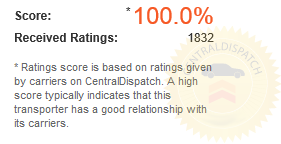Shipping a vehicle to or from Hawaii presents unique challenges that mainland transport doesn’t involve. With the Pacific Ocean between you and your destination, understanding your shipping options becomes essential for ensuring your vehicle arrives safely and on time. Below, we’ll break down the differences between open and enclosed transport options, helping you make an informed decision based on your specific needs, vehicle type, and budget considerations.
Understanding Vehicle Shipping Methods to Hawaii
Hawaii car shipping involves a combination of land and sea transport methods, creating a more complex logistical process than standard continental auto shipping. Each transport method provides different levels of protection, convenience, and car shipping costs that should be carefully considered based on your vehicle’s value and your personal requirements.
Open Car Transport
Open car transport is the standard and most economical method for the overland portion of your Hawaii vehicle shipment. With this option, your vehicle travels on an open-air carrier that holds multiple vehicles at once. These carriers are a cost-effective solution for standard vehicle shipping.
Open car shipping offers several advantages beyond just the lower price point. The widespread availability of open trailers means more flexible scheduling options and typically faster pickup times. Additionally, open car carriers use secure tie-down systems to ensure your vehicle remains safely in place. This method is ideal for standard vehicles, daily drivers, and situations where budget considerations are a priority without compromising on reliable delivery.
Enclosed Auto Transport
Enclosed auto transport provides premium protection for your vehicle during the mainland portion of its journey to or from Hawaii. With this method, your vehicle travels inside a fully enclosed trailer, completely shielded from weather elements, road debris, and public view. This additional protection comes at a higher price point but offers peace of mind, especially for high-value vehicles.
The benefits of enclosed shipping extend beyond just weather protection. Enclosed carriers typically transport fewer vehicles at once, meaning more personalized attention from experienced drivers who specialize in handling valuable automobiles. Enclosed car shipping is the recommended choice for luxury vehicles, classic cars, exotic automobiles, motorcycles, and any vehicle with custom modifications or sentimental value that warrants the additional investment in protection.
RoRo (Roll-on/Roll-off) Shipping
RoRo shipping is the standard method for the ocean portion of Hawaii vehicle transport. With this approach, your vehicle is driven directly onto specialized vessels designed with internal ramps and vehicle decks. Once aboard, your vehicle is securely fastened to the deck to prevent movement during the ocean crossing. Upon arrival at the destination port, your vehicle is simply driven off the vessel — hence the name “roll-on/roll-off.”
RoRo auto shipping combines efficiency with cost-effectiveness, making it the preferred choice for most standard Hawaii vehicle shipments. The process minimizes handling, as vehicles are driven rather than lifted onto the vessel, reducing the risk of damage during loading and unloading. It’s worth noting that when considering open vs enclosed shipments Hawaii routes offer, RoRo is compatible with either mainland transport method — your vehicle can travel via open or enclosed carrier to the port before boarding the RoRo vessel.
Container Shipping
Container shipping provides the highest level of protection for the ocean portion of your Hawaii vehicle transport. With this method, your vehicle is placed inside a steel shipping container, either exclusively (exclusive container) or shared with other vehicles (consolidated container). The container is then loaded onto an ocean vessel for transport to Hawaii. This enclosed environment offers complete protection from salt spray, ocean elements, and weather conditions during the journey.
The primary advantage of container shipping is the superior protection it offers during the ocean crossing. Your vehicle remains untouched inside the container from departure until arrival, minimizing handling and exposure. While this premium service comes at a higher cost, it’s the recommended option for high-value vehicles, classic cars, and situations where maximum protection throughout the entire journey is the priority.
How to Prepare Your Vehicle for Hawaii Transport
Cleaning and Vehicle Preparation
Properly preparing your vehicle before transport is essential to ensure a smooth shipping process to or from Hawaii. A clean vehicle allows for accurate inspection documentation and helps meet Hawaii’s strict agricultural inspection requirements. U.S. Customs and Border Protection inspects all vehicles entering Hawaii to prevent the introduction of invasive species, making thorough cleaning non-negotiable.
- Wash the exterior thoroughly, including the undercarriage
- Clean the interior completely, removing all personal items and debris
- Ensure the vehicle has no more than ¼ tank of fuel
- Disable or disconnect any alarm systems
- Remove or secure all loose parts, custom accessories, and aftermarket additions
- Document any existing damage with date-stamped photographs
- Check for and fix any fluid leaks
- Ensure tires are properly inflated and the battery is secured and charged
Required Documentation
Shipping a vehicle to or from Hawaii requires specific documentation to satisfy both shipping company requirements and legal regulations. Having all necessary paperwork prepared in advance will help avoid delays and ensure a smooth transport process.
- Vehicle title and registration (original or copies depending on shipping direction)
- Government-issued photo identification (driver’s license or passport)
- Bill of Lading (provided by the car shipping company)
- Lien authorization letter (if the vehicle is financed or leased)
- Notarized authorization letter (if someone other than the registered owner is handling the transport)
- Insurance information for both the vehicle and the shipping process
- Payment confirmation or proof of payment
- Booking confirmation number from the car shipping company
Vehicle Condition Inspections
A detailed inspection occurs at both the pickup and delivery points before and after transit. This process documents your vehicle’s condition before and after transport, providing important protection for both you and the shipping company. The inspection report, called the Bill of Lading, serves as an official record of your vehicle’s condition throughout the shipping process.
During inspection, a transport representative will note any existing damage, including scratches, dents, paint chips, and mechanical issues. Both you and the transport representative should sign this document, confirming agreement on the vehicle’s condition. We recommend taking your own date-stamped photographs of your vehicle from multiple angles before shipping as additional documentation. Upon delivery, conduct a thorough inspection of your vehicle and note any new damage on the delivery inspection report before signing for receipt of your vehicle.
Why Choose Hawaii Car Transport?
At Hawaii Car Transport, we specialize in vehicle shipping to and from the Hawaiian Islands, offering unmatched expertise in navigating the unique requirements of ocean and overland transport. Our established relationships with top-rated carriers and shipping lines ensure reliable service to all Hawaiian ports, including Honolulu, Hilo, Kahului, Kona, and Nawiliwili. We provide comprehensive door-to-door service, real-time shipment tracking, and transparent all-inclusive pricing with no hidden fees.
Our 5-star customer service team consists of dedicated Hawaii shipping specialists who understand the specific requirements and challenges of island transport. We offer both open and enclosed transport options for the mainland portion of your journey, along with RoRo and container shipping for the ocean crossing, tailoring our services to your specific needs and vehicle requirements. With thousands of successful Hawaii shipments completed, we have the experience and expertise to ensure your vehicle arrives safely at its destination.
Ready to ship your vehicle to or from Hawaii? Visit our website to use our instant quote calculator and book your shipment securely.
Frequently Asked Questions
What’s the main difference between open and enclosed shipments for Hawaii routes?
The main difference between open vs enclosed shipments Hawaii routes offer is the level of protection during the mainland portion of transport. Open transport carries vehicles on uncovered carriers with secure tie-down systems at a more economical price point, while enclosed transport places vehicles inside fully enclosed trailers for additional protection from weather elements and road debris at a premium price.
Can I ship a non-running vehicle to Hawaii?
Yes, non-running vehicles can be shipped to Hawaii, but they require special equipment for loading and unloading, which incurs additional fees. You must notify Hawaii Car Transport in advance if your vehicle is non-operational to ensure proper arrangements are made.
How long does vehicle shipping to Hawaii take?
Vehicle shipping to Hawaii typically takes 7-21 days door-to-door, depending on your mainland location and Hawaiian destination. West Coast origins usually require 1-5 days for mainland transport plus 7-10 days for ocean crossing, while East Coast shipments may take 7-10 days for mainland transport plus the ocean transit time.



